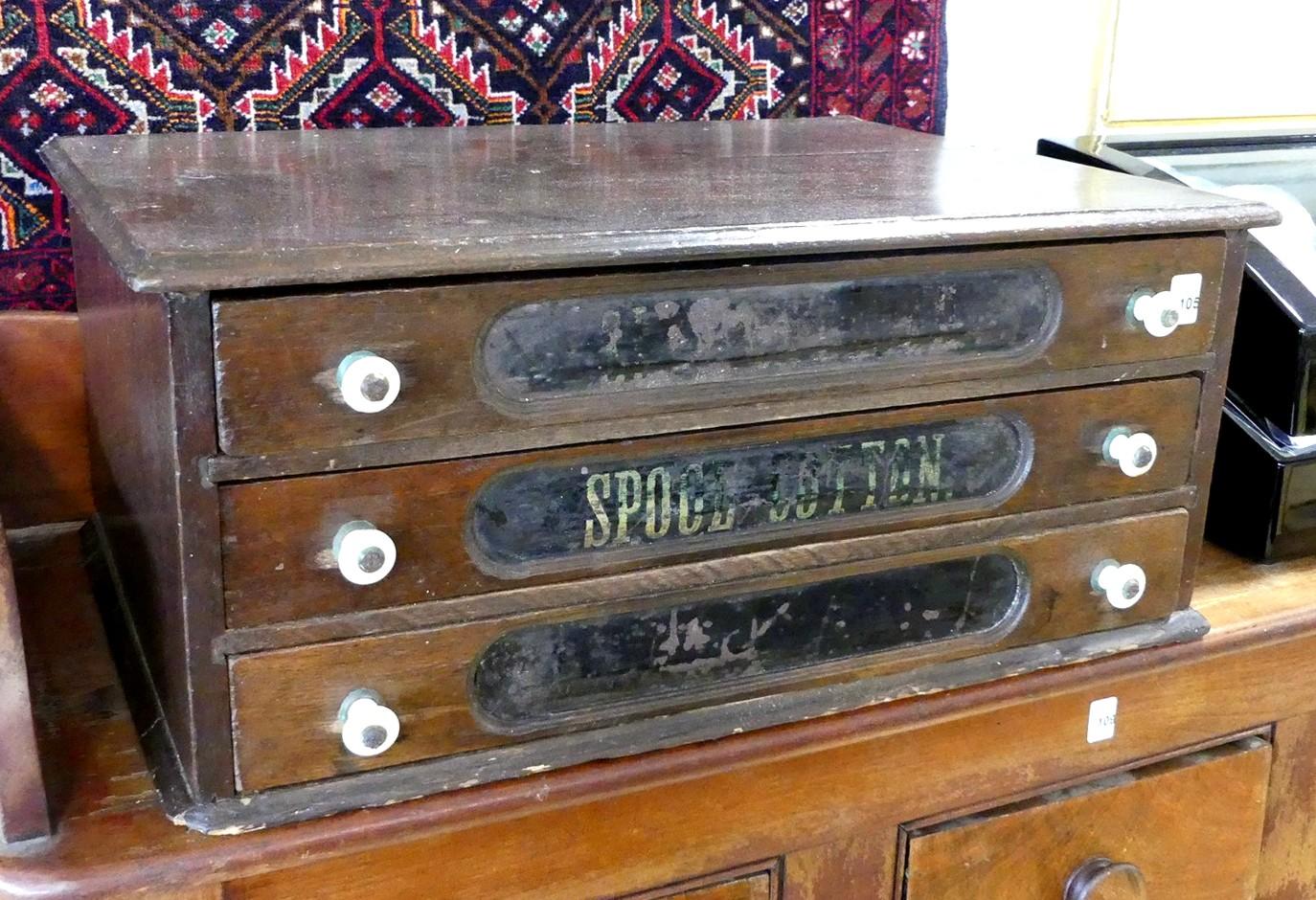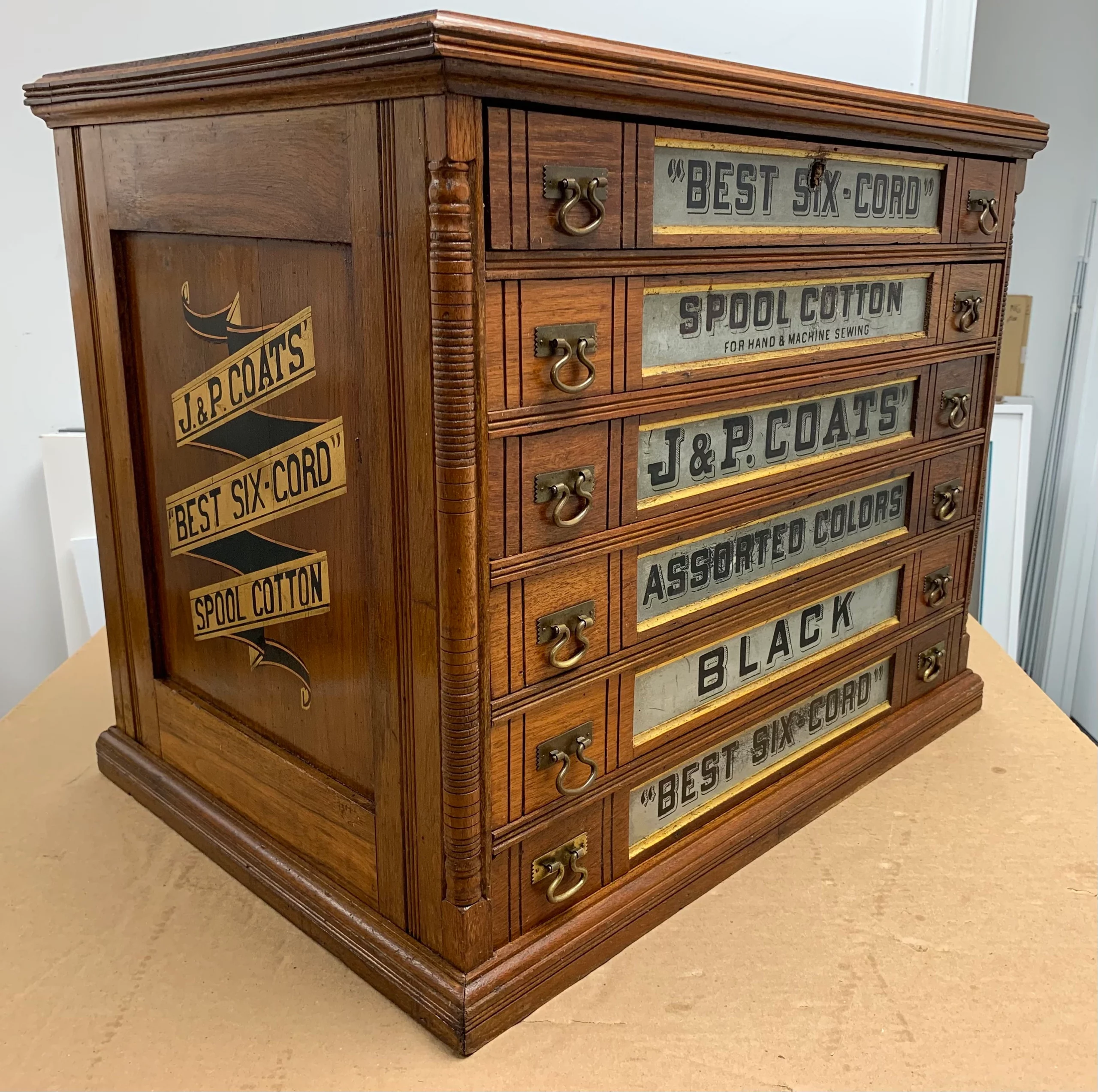Understanding Antique Spool Cabinets

Antique spool cabinets, those charming little chests filled with wooden spools, aren’t just a quirky piece of furniture. They tell a story about a bygone era, when thread was a vital part of everyday life. These cabinets are a testament to the craftsmanship and ingenuity of the past, and their value reflects their historical significance and artistic appeal.
History of Spool Cabinets
Spool cabinets emerged in the late 19th and early 20th centuries, coinciding with the rise of the sewing machine and the widespread use of thread in the home. Before the invention of the sewing machine, people relied on hand sewing, and thread was a valuable commodity. It was stored in wooden spools, which were then kept in cabinets specifically designed for this purpose. These cabinets served a practical purpose, keeping thread organized and accessible, but they also reflected the homeowner’s taste and social standing.
Types of Spool Cabinets
Spool cabinets come in a variety of styles and designs, reflecting the diverse tastes and regional influences of their creators. Here are some common types:
- Wall-mounted spool cabinets: These cabinets were often made to hang on the wall, taking up less space and offering easy access to thread. They were often simple in design, with a single shelf or drawer to hold spools.
- Freestanding spool cabinets: These cabinets were larger and more elaborate, often with multiple shelves or drawers, and sometimes featuring decorative elements like carvings, paint, or glass doors.
- Traveling spool cabinets: These smaller cabinets were designed to be portable, allowing seamstresses to take their thread with them when they traveled. They often featured a handle or carrying strap.
Materials Used in Spool Cabinet Construction
Spool cabinets were typically constructed from solid wood, reflecting the craftsmanship and quality of the era. Some common materials include:
- Oak: A durable and beautiful hardwood, often used for its rich color and grain pattern.
- Pine: A softer wood, often used for its affordability and ease of working.
- Cherry: A prized hardwood, known for its warm color and distinctive grain pattern.
- Walnut: A dark and elegant hardwood, often used for its rich color and beautiful grain.
Craftsmanship and Design Elements
The craftsmanship and design elements of antique spool cabinets contribute significantly to their value. These cabinets were often hand-crafted with meticulous attention to detail, showcasing the skills and artistry of their makers. Here are some elements that enhance their value:
- Intricate carvings: Spool cabinets often feature elaborate carvings, adding to their visual appeal and artistic value. These carvings can depict floral motifs, geometric patterns, or even scenes from everyday life.
- Hand-painted details: Some spool cabinets are adorned with hand-painted details, showcasing the talent and artistry of the painter. These details can include floral motifs, landscapes, or even portraits.
- Unique hardware: Spool cabinets often feature unique hardware, such as hand-forged hinges, decorative pulls, or intricate locks. These details add to the overall aesthetic and historical value of the cabinet.
Factors Influencing Value

So, you’ve got your hands on a charming antique spool cabinet, and you’re wondering: “Is this thing worth a fortune?” Well, buckle up, because we’re about to dive into the world of spool cabinet values.
Think of it like this: every spool cabinet is a unique snowflake, with its own story and set of features that affect its worth.
Age
Age is a major factor in determining the value of any antique, and spool cabinets are no exception. Generally, the older the cabinet, the more valuable it is. A cabinet from the late 1800s, for example, will likely fetch a higher price than one from the early 1900s.
But, remember, age isn’t everything! A well-preserved and rare cabinet from the early 1900s could be just as valuable as a more common cabinet from the late 1800s.
Condition
Condition is the next big factor, and it’s a real deal-breaker. Think of it as the cabinet’s overall health. A cabinet in excellent condition, with minimal wear and tear, will command a higher price than a cabinet that’s been through the wringer.
For example, a cabinet with original paint, intact hardware, and a sturdy structure will be more desirable than a cabinet with chipped paint, missing knobs, and wobbly legs.
Provenance
Provenance is like the cabinet’s family history. It refers to the cabinet’s origin, ownership history, and any notable events it may have witnessed.
Imagine a cabinet that once belonged to a famous textile mill owner, or one that was featured in a historical film. That kind of backstory can significantly increase the cabinet’s value.
Desirable Features
Now, let’s talk about those special features that make a spool cabinet stand out from the crowd.
- Intricate Carving: A cabinet with detailed carvings, especially those that depict scenes from everyday life or historical events, will be more valuable than a plain cabinet.
- Unique Materials: Cabinets made from unusual or high-quality materials, such as mahogany or rosewood, will generally fetch a higher price.
- Original Hardware: Cabinets with original hardware, such as hinges, knobs, and locks, are considered more valuable than those with replacements.
- Unusual Design: Cabinets with unique or unusual designs, such as a curved front or an unusual shape, are highly sought after.
Rarity and Maker’s Reputation
Rarity is like a golden ticket in the world of antiques. The fewer cabinets of a particular style or maker exist, the more valuable they become.
And, let’s not forget the maker’s reputation. Cabinets made by renowned furniture makers or workshops will often command higher prices than those made by lesser-known craftspeople.
Assessing and Appraising Antique Spool Cabinets: Antique Spool Cabinet Value

Now that you’ve got a handle on what makes a spool cabinet special, let’s dive into the nitty-gritty of determining its worth. You wouldn’t want to accidentally sell your grandma’s heirloom for a song, would you?
Authenticity and Identifying Antique Spool Cabinets, Antique spool cabinet value
Authenticity is key when it comes to antique spool cabinets. Not everything that looks old is actually old, so we need to be able to spot the real deal.
- Construction and Materials: Authentic antique spool cabinets were often built with solid wood, like oak, maple, or cherry. Look for dovetail joints, hand-cut mortise and tenon joints, and hand-forged hardware. Avoid cabinets with plywood or particleboard construction, as these materials weren’t common in the era of antique spool cabinets.
- Spool Design and Size: Antique spool cabinets were typically designed to hold specific types of spools, with varying sizes and shapes. The spools themselves can be a good indicator of age. Look for spools made of wood, bone, or ivory, and with unique decorative details.
- Hardware and Finishes: Hardware like hinges, latches, and pulls can provide clues about a cabinet’s age. Original hardware often has a patina or wear that reflects its age. Pay attention to the finish. Antique spool cabinets may have been painted, stained, or varnished, and the finish can reveal clues about the cabinet’s history.
- Documentation and Provenance: The most reliable way to confirm authenticity is through documentation. If you have any records, photos, or family stories that link the cabinet to a specific time period, that’s a goldmine. Even if you don’t have documentation, you can sometimes trace the cabinet’s provenance through research, such as antique shops, auction records, or historical societies.
Assessing Condition and its Impact on Value
So you’ve got an antique spool cabinet, but is it in tip-top shape? The condition of an antique cabinet significantly influences its value.
- Overall Structural Integrity: A cabinet with a solid frame, stable drawers, and no major cracks or warping is going to be more valuable than one that’s been damaged or poorly repaired. Look for signs of wood rot, insect infestation, or structural instability.
- Finish and Surface Condition: The finish of a cabinet can tell a story. A well-preserved original finish is a major plus. Scratches, chips, and faded paint can decrease value. However, even a worn or distressed finish can add character and charm, so it’s not always a deal-breaker.
- Spool Condition: The condition of the spools themselves plays a role in value. Complete sets of original spools in good condition are highly desirable. Missing spools, broken spools, or spools in poor condition can negatively impact value.
- Hardware and Accessories: Original hardware and accessories, such as keys, labels, or decorative elements, can significantly enhance the value of a spool cabinet. Missing or damaged hardware can decrease value.
Key Features and their Potential Value Impact
Now, let’s get into the nitty-gritty. Here’s a breakdown of key features and their potential impact on value:
| Feature | Potential Value Impact |
|---|---|
| Age and Origin | Older cabinets, especially those with a unique regional or historical connection, are typically more valuable. |
| Wood Type and Quality | Solid hardwoods like oak, cherry, and walnut are highly prized. |
| Construction Techniques | Dovetail joints, mortise and tenon joints, and hand-forged hardware are indicators of quality craftsmanship. |
| Design and Style | Unique designs, intricate details, and specific regional styles can increase value. |
| Condition | Excellent condition, with a well-preserved original finish and complete sets of spools, commands the highest value. |
| Provenance | Documentation or a traceable history adds authenticity and value. |
| Rarity and Uniqueness | Spool cabinets with unusual features, rare wood types, or limited production runs can be exceptionally valuable. |
Obtaining Professional Appraisals and Valuations
Sometimes, you need a professional opinion to truly understand the worth of your antique spool cabinet.
- Antique Appraisers: Certified antique appraisers have the expertise to assess the authenticity, condition, and value of antique furniture. They can provide a formal appraisal report that can be used for insurance purposes, estate planning, or selling.
- Auction Houses: Reputable auction houses often have specialists who can provide valuations for antique furniture. They may also offer consignment services if you’re considering selling your cabinet.
- Antique Dealers: Experienced antique dealers can offer insights into the value of your spool cabinet. They may also be interested in purchasing it from you.
- Historical Societies and Museums: Local historical societies or museums may have staff who can provide information about the history of spool cabinets and offer an opinion on value.
Antique spool cabinet value – Antique spool cabinets, with their charming history and intricate craftsmanship, can fetch a handsome price on the collector’s market. While their design is often reminiscent of a bygone era, their practicality remains relevant today. Consider using wire racks for kitchen cabinets to maximize storage space in your kitchen, just as those antique spools once held valuable threads in a textile mill.
The ingenuity of those who crafted these cabinets, and the clever solutions we find in modern kitchen organization, share a common thread – a desire to make the most of available space.
Antique spool cabinets, often crafted from sturdy wood and boasting intricate details, can command a hefty price tag, especially if they’re in excellent condition. When searching for the perfect display for your treasured antique, consider exploring the vast selection of glass display cabinets online in India , where you’ll find modern designs that complement the timeless elegance of your antique spool cabinet.
